Unofficial report from CloudConf 2011
On Tuesday and Wednesday, March 29 and 30, in Moscow, in the Digital October Technopark, the Russian National Conference on Cloud Technologies (official name, by the way) CloudConf 2011 takes place. This year our company is a participant in the conference, and, taking the opportunity , we decided to publish a small photo report from the event and first impressions of the new site.
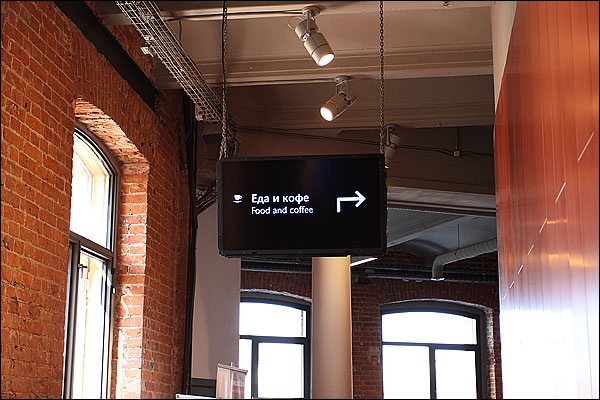
Inside a lot of photos, the volume is less than 3 MB
')
On the part of the Marsh Island, occupied by the buildings of the Red October factory in recent years, a kind of “bohemian quarter” has been formed, if you can call it that. The fact is that, against the background of announced plans for the demolition of buildings and the construction of expensive housing, the rental cost here has fallen dramatically and the premises are flooded with recording studios, trendy bars, clubs, restaurants, Internet agencies, design bureaus and similar businesses.
The best place for a gathering platform for startups, a place of power for Internet companies and all kinds of near-telecom events in Moscow is simply not to be found. Apparently, that's why Digital October was made right here. It is noteworthy that the platform instantly picked up the banner from the weakened hands of InfoSpace, located very close, across the river. Only in the beginning of the year, meetings with representatives of TechCrunch and leading Internet companies, start-up meetings Startup Feedback from the Greenfield Project and a large conference of online advertising eTarget have already been held here. So for CloudConf, they didn’t look for any other venue.
The site as a whole was inconsistent. On the one hand - spacious and well-equipped audience, high-speed wireless Internet. On the other - the heritage of the past around, crowds and garbage containers on the street, Soviet marble on the stairs. We believe that this is only a transitional cost. The site was clearly hurried to open, but they did it, apparently, not for nothing. Minor inconveniences will be forgotten, and events - will be remembered. And, of course, they will bring benefit to the organizers, participants and hospitable hosts.
There were a lot of reports at the conference, and even more are planned for the next day, so that you can write a short story for their reasons. Surely, in the official results of the conference organizers will publish presentations or a summary. We would like to mention here only the report of Vladimir Dolgov, director of Google Russia. The report was devoted to Google's cloud strategy and told about the company's three main areas of work in the field of loading, storing and structuring data in its own cloud.
According to Vladimir, in the next 10 years the amount of information on the Internet will grow 60 times. Basically, of course, due to "heavy content": video, music and images.
For their storage is intended service Google Storage. Access to the storage is carried out through the Google API and with the help of other services and applications of the company, as well as applications of other vendors. Best of all, storage is suitable for storing static data and backup copies. Full-featured multi-user access is supported, including from mobile devices.
Pros: performance and scale of the solution, access protection and data backup, clear tools for developers. Objects of 100 GB and more are supported in unlimited quantities, it is provided at the level of users, objects, baskets, rights for reading editing are delimited. Access to data can be obtained through the console or the web interface. Currently, the service is used only within the company, but in the near future it will be available to customers worldwide.
Prices for services will depend on the availability of data transmission infrastructure in the country. For now this
17 cents per GB of storage per month, download 1 GB of data - 10 cents. In the US, it is planned to provide software developers with 100 GB of storage for free.
Prediction API - machine learning technology, allows you to build predictions when processing arrays of data, for example when sorting texts by languages. Used to determine customer preferences, investment risk, mail filtering, recommender systems, content filtering, and so on. The input data format is any, output hundreds of categories and headings. The technology is already used by large global corporations that process correspondence from customers with automatic response in the sender's language.
BigQuery. Query language for large arrays and data analysis. It is used in interactive tools, anti-spam, in determining trends. Scale: billions of records, query language - SQL.
These three components are part of Google’s cloud strategy.
Well, so that those who have not attended the conference (or have not yet attended), we offer a small photo report so that you can feel the spirit of CloudConf 2011.
Panorama of the hall

Digital October solar corridors
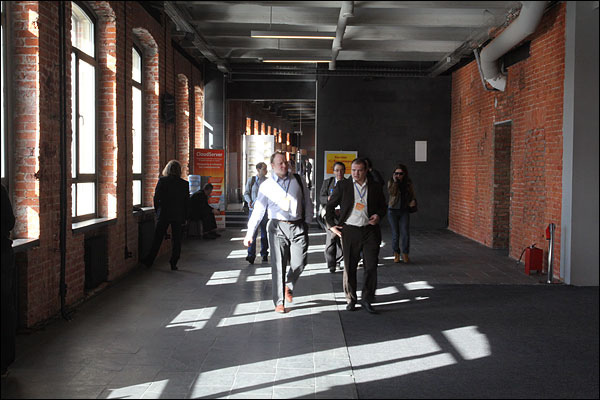
Hall during the reports and in the breaks


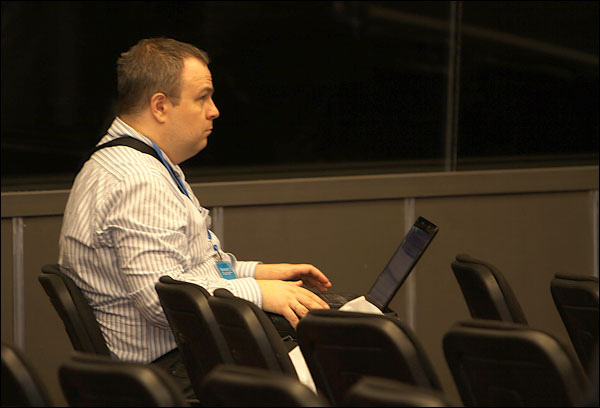
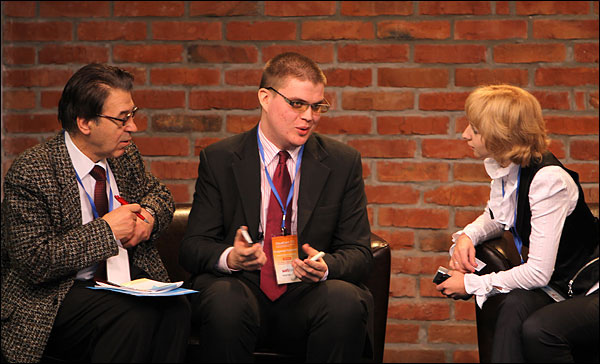
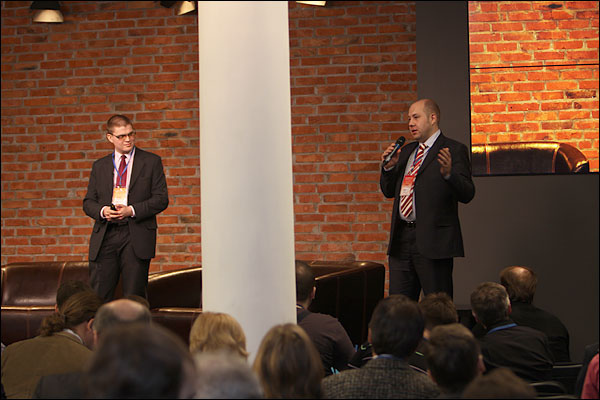



Interviews with participants
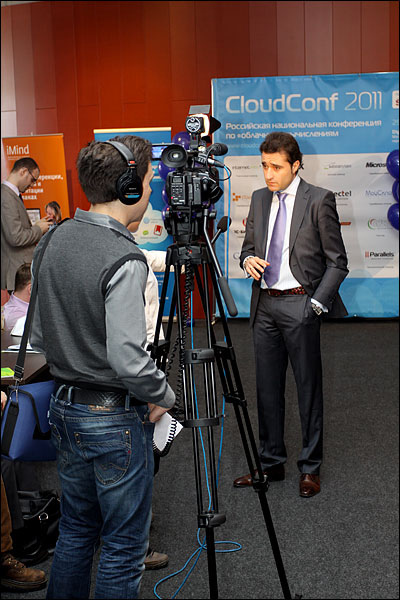
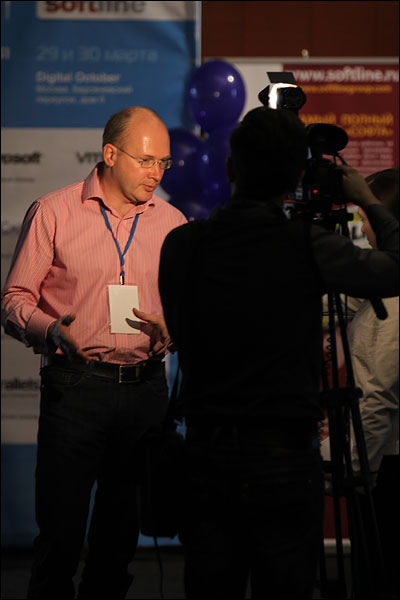
Stands and rollapy:
Cloudconf
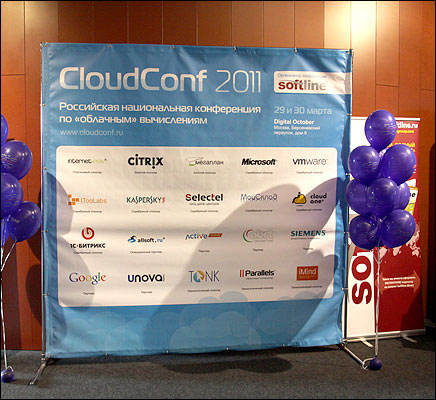
Internet4You
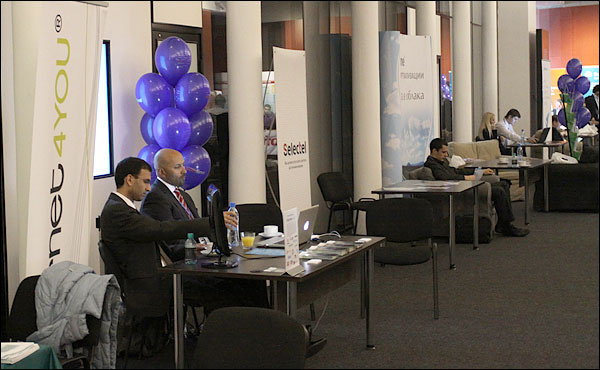
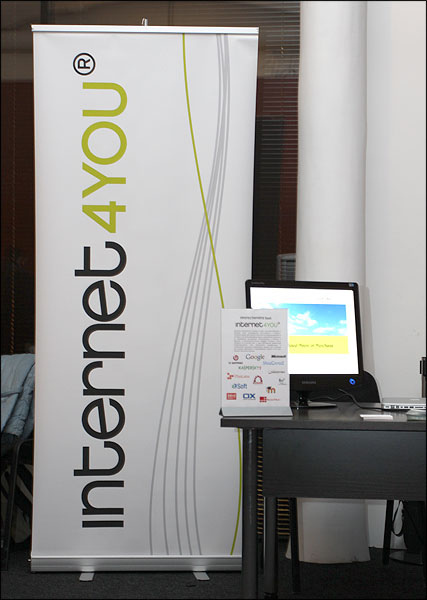
Cloud one

Hall with stands, not very well located. On the sides - the door to the audience.
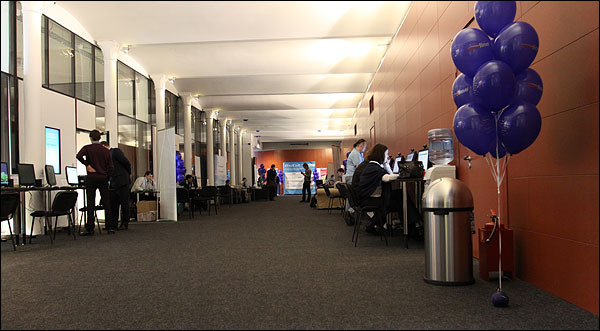
Tonk thin clients
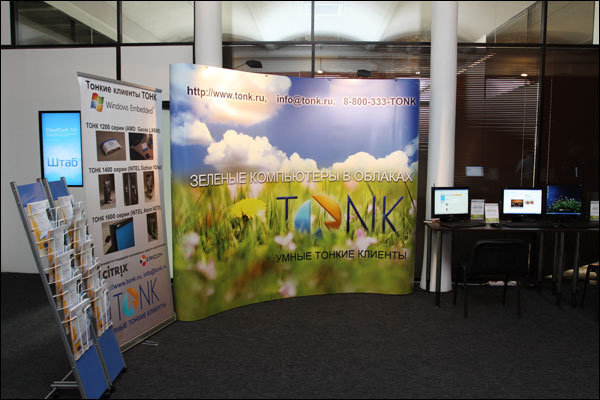
Softline
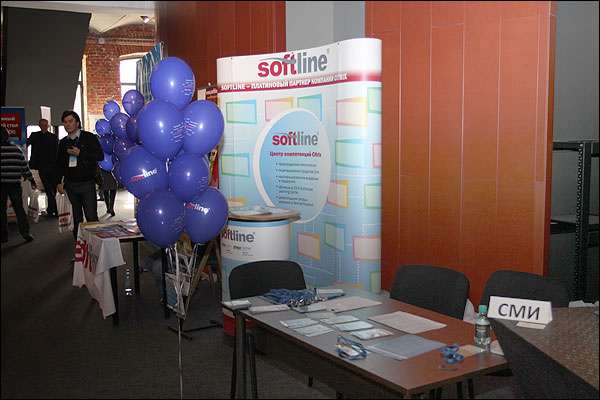


Kaspersky Lab

Cloud service demo.
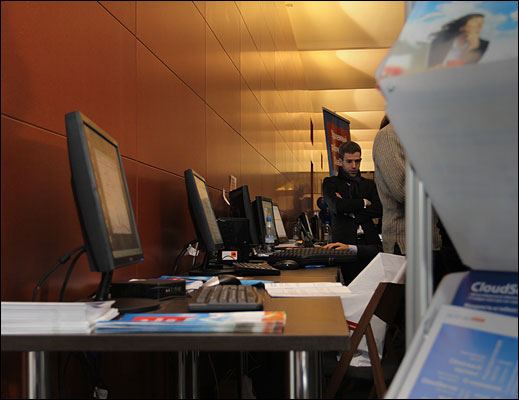
Persons of the conference.
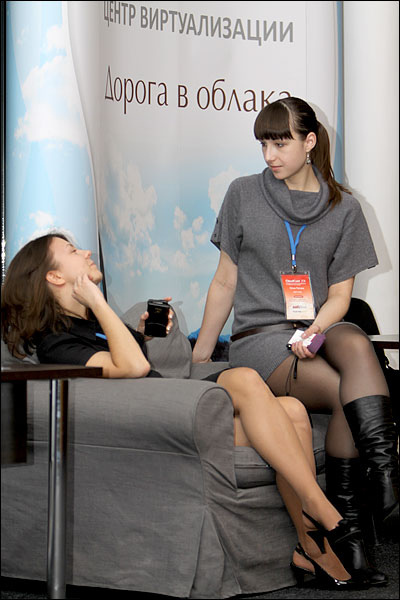
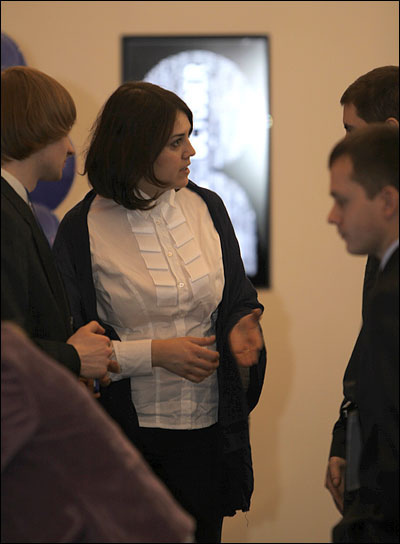
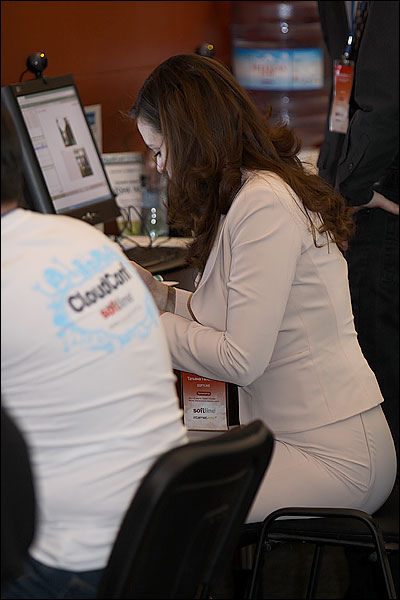
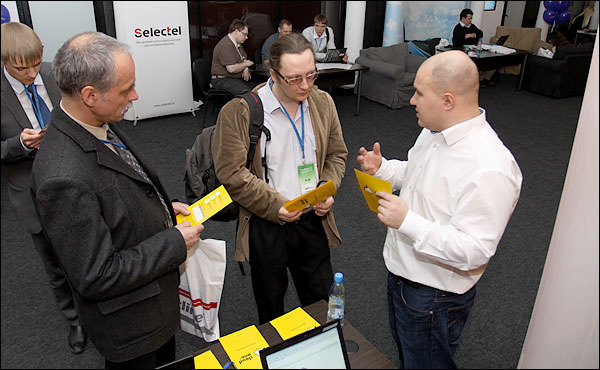
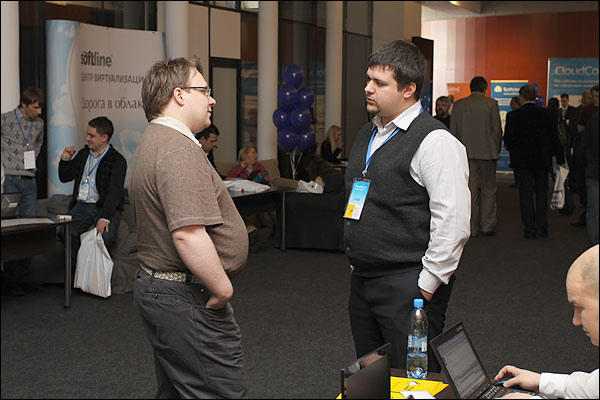
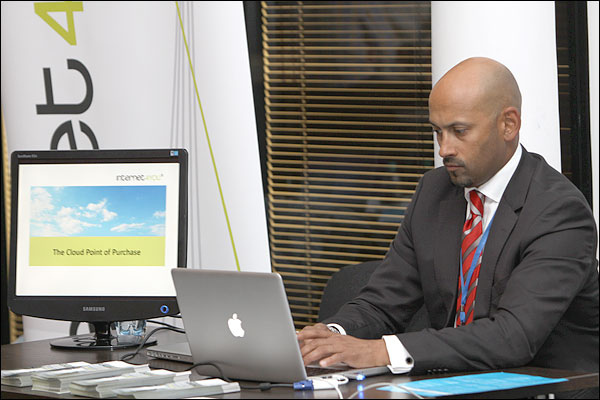
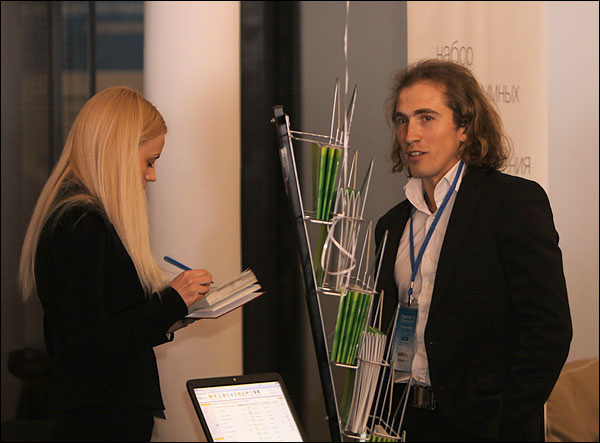
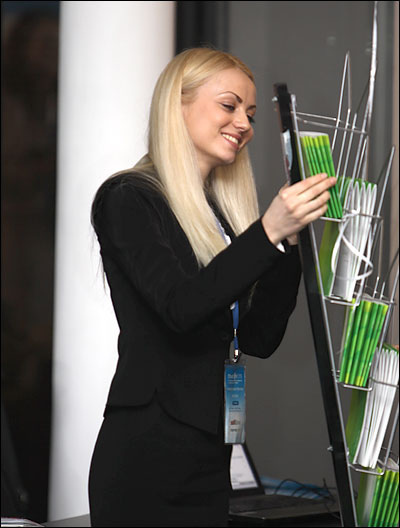

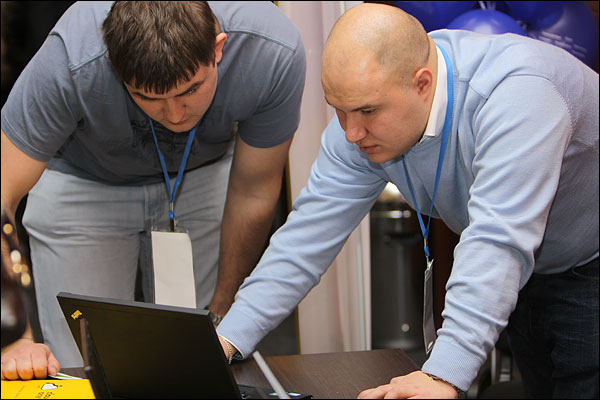
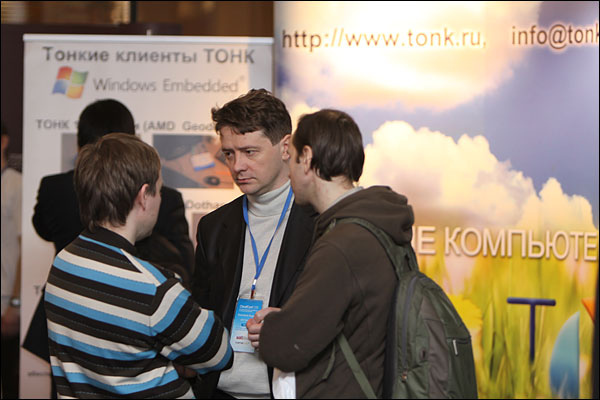

Hodgepodge of displays, corridors, plates and objects. Lebedev-style.

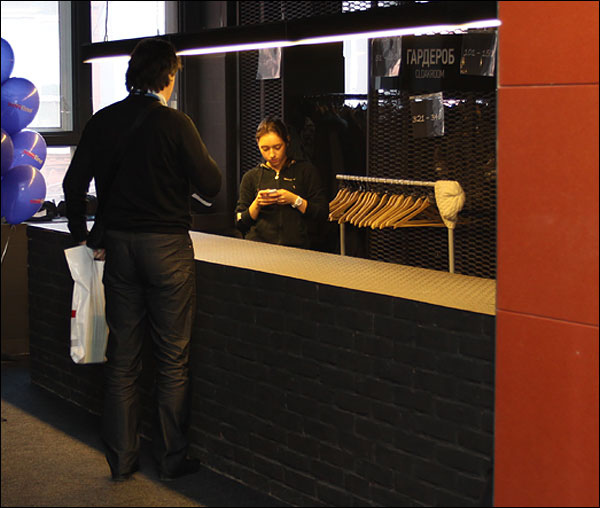
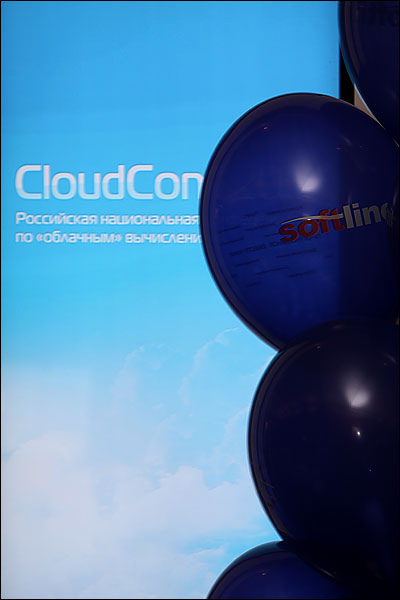

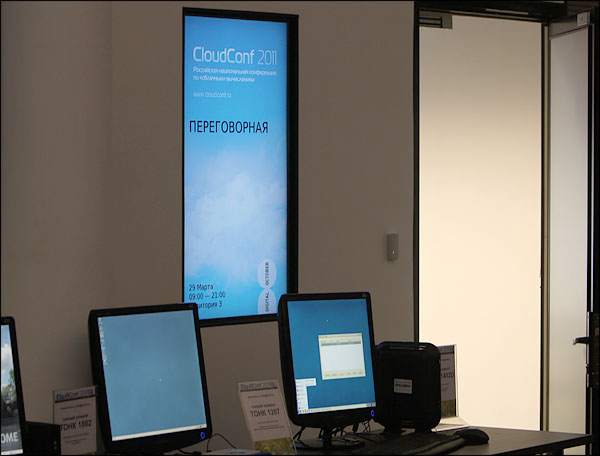
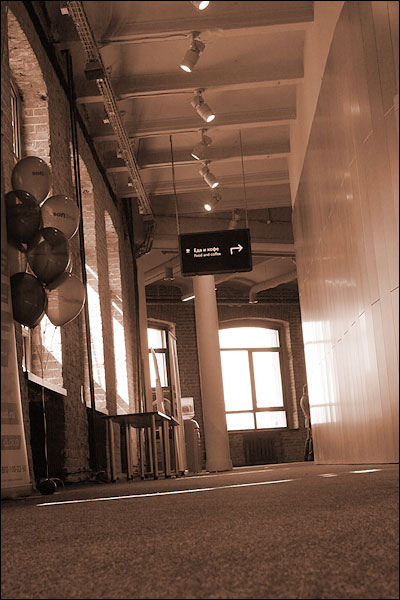

Elevator shaft, covered with durable plastic on top. Feelings curious.
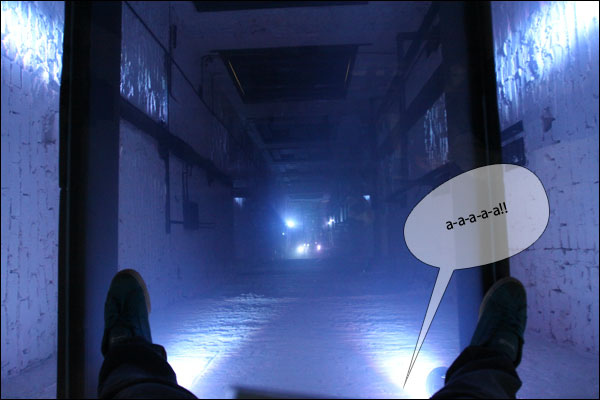
Food & Drinks Zone
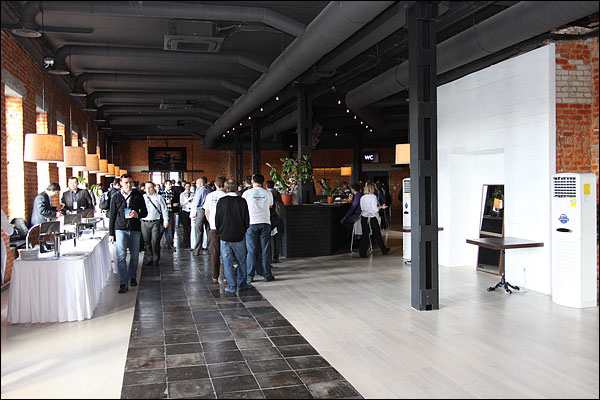
Views from huge windows. Perfectly dilute the overall atmosphere of high-tech-baroque.


Photo by Andrey Novak. www.novak.ru

Inside a lot of photos, the volume is less than 3 MB
')
On the part of the Marsh Island, occupied by the buildings of the Red October factory in recent years, a kind of “bohemian quarter” has been formed, if you can call it that. The fact is that, against the background of announced plans for the demolition of buildings and the construction of expensive housing, the rental cost here has fallen dramatically and the premises are flooded with recording studios, trendy bars, clubs, restaurants, Internet agencies, design bureaus and similar businesses.
The best place for a gathering platform for startups, a place of power for Internet companies and all kinds of near-telecom events in Moscow is simply not to be found. Apparently, that's why Digital October was made right here. It is noteworthy that the platform instantly picked up the banner from the weakened hands of InfoSpace, located very close, across the river. Only in the beginning of the year, meetings with representatives of TechCrunch and leading Internet companies, start-up meetings Startup Feedback from the Greenfield Project and a large conference of online advertising eTarget have already been held here. So for CloudConf, they didn’t look for any other venue.
The site as a whole was inconsistent. On the one hand - spacious and well-equipped audience, high-speed wireless Internet. On the other - the heritage of the past around, crowds and garbage containers on the street, Soviet marble on the stairs. We believe that this is only a transitional cost. The site was clearly hurried to open, but they did it, apparently, not for nothing. Minor inconveniences will be forgotten, and events - will be remembered. And, of course, they will bring benefit to the organizers, participants and hospitable hosts.
There were a lot of reports at the conference, and even more are planned for the next day, so that you can write a short story for their reasons. Surely, in the official results of the conference organizers will publish presentations or a summary. We would like to mention here only the report of Vladimir Dolgov, director of Google Russia. The report was devoted to Google's cloud strategy and told about the company's three main areas of work in the field of loading, storing and structuring data in its own cloud.
According to Vladimir, in the next 10 years the amount of information on the Internet will grow 60 times. Basically, of course, due to "heavy content": video, music and images.
For their storage is intended service Google Storage. Access to the storage is carried out through the Google API and with the help of other services and applications of the company, as well as applications of other vendors. Best of all, storage is suitable for storing static data and backup copies. Full-featured multi-user access is supported, including from mobile devices.
Pros: performance and scale of the solution, access protection and data backup, clear tools for developers. Objects of 100 GB and more are supported in unlimited quantities, it is provided at the level of users, objects, baskets, rights for reading editing are delimited. Access to data can be obtained through the console or the web interface. Currently, the service is used only within the company, but in the near future it will be available to customers worldwide.
Prices for services will depend on the availability of data transmission infrastructure in the country. For now this
17 cents per GB of storage per month, download 1 GB of data - 10 cents. In the US, it is planned to provide software developers with 100 GB of storage for free.
Prediction API - machine learning technology, allows you to build predictions when processing arrays of data, for example when sorting texts by languages. Used to determine customer preferences, investment risk, mail filtering, recommender systems, content filtering, and so on. The input data format is any, output hundreds of categories and headings. The technology is already used by large global corporations that process correspondence from customers with automatic response in the sender's language.
BigQuery. Query language for large arrays and data analysis. It is used in interactive tools, anti-spam, in determining trends. Scale: billions of records, query language - SQL.
These three components are part of Google’s cloud strategy.
Well, so that those who have not attended the conference (or have not yet attended), we offer a small photo report so that you can feel the spirit of CloudConf 2011.
Panorama of the hall

Digital October solar corridors

Hall during the reports and in the breaks








Interviews with participants


Stands and rollapy:
Cloudconf

Internet4You


Cloud one

Hall with stands, not very well located. On the sides - the door to the audience.

Tonk thin clients

Softline



Kaspersky Lab

Cloud service demo.

Persons of the conference.












Hodgepodge of displays, corridors, plates and objects. Lebedev-style.







Elevator shaft, covered with durable plastic on top. Feelings curious.

Food & Drinks Zone

Views from huge windows. Perfectly dilute the overall atmosphere of high-tech-baroque.


Photo by Andrey Novak. www.novak.ru
Source: https://habr.com/ru/post/116441/
All Articles